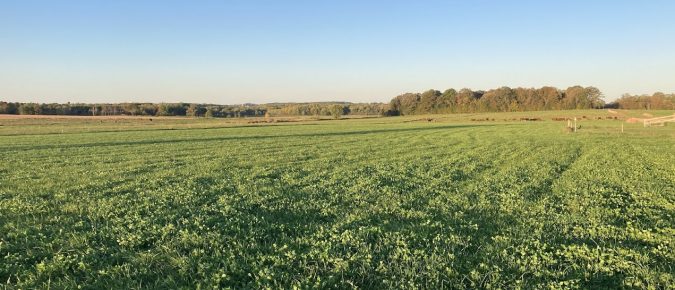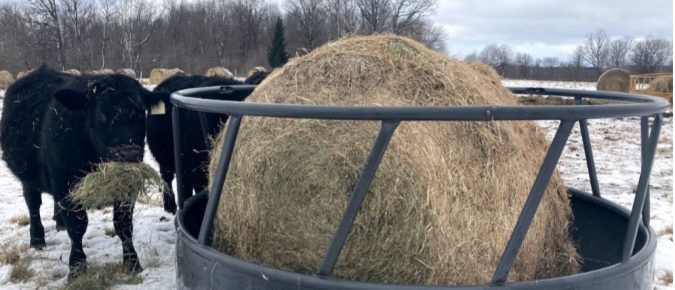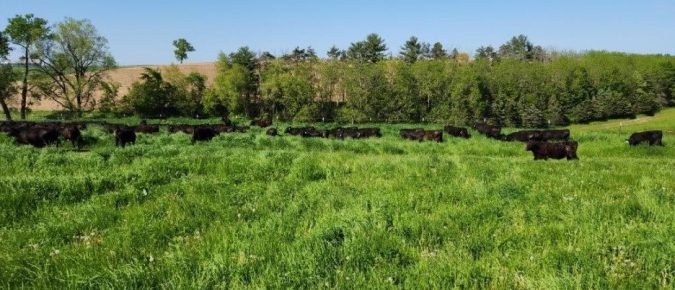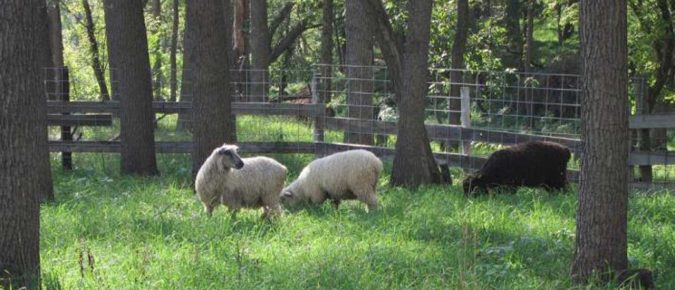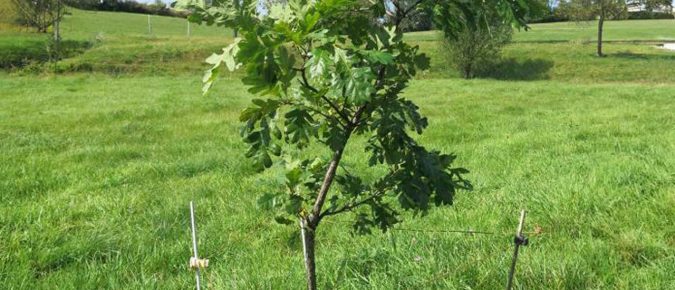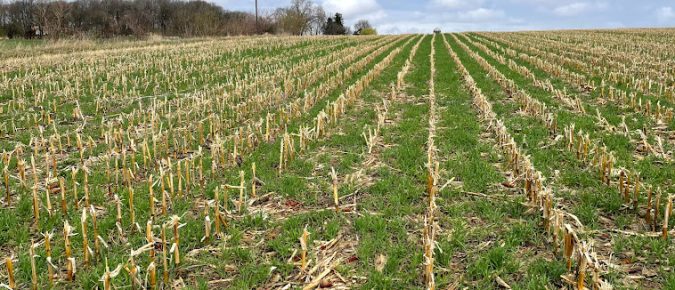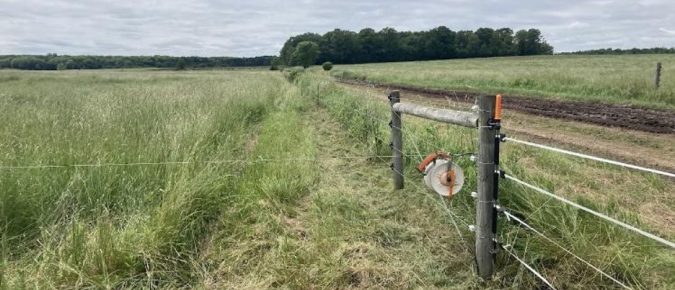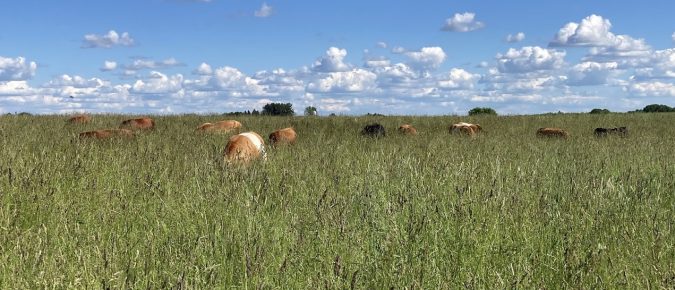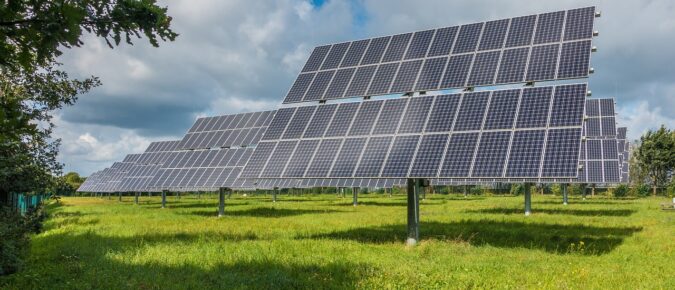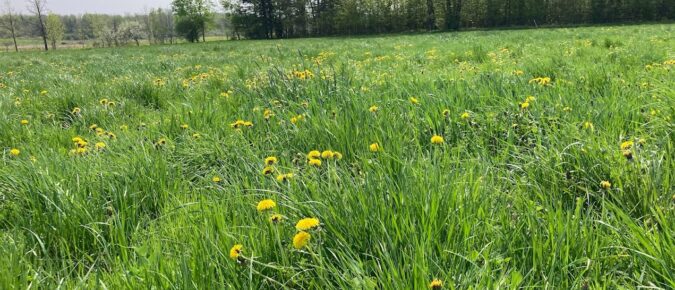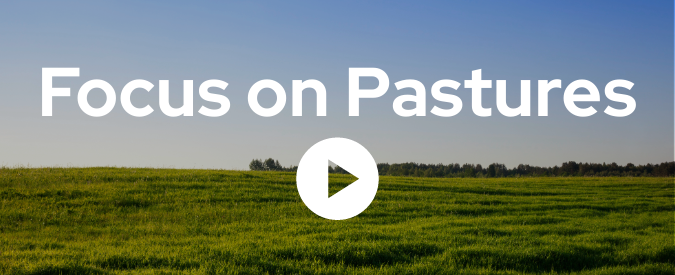While legume longevity can be improved through grazing and fertility management, it is a common practice to reseed legumes every few years. This is often achieved by interseeding into established pastures by no-till drilling or frost-seeding. Each method has unique benefits and drawbacks.
In 2023, a grazing farmer network in northwestern Wisconsin was asked to identify the greatest needs for research. At the top of their list was the practice of winter bale grazing. We designed a research project that sought to answer some of their questions about the practice.
This fact sheet was designed to walk you through that decision-making process and assist you in selecting forage species that are compatible with your farm and complimentary to each other. While there are many great seed mixes that are commercially available, this resource is intended to empower farmers to develop an establishment plan that fits their objectives and design a seed mix that is tailored to their farm.
Silvopasture is an agroforestry practice that integrates trees, forage, and livestock on the same site and manages the system to protect the environment. Like any agricultural system, silvopasture requires careful management to provide economic benefits and prevent ecological damage.
Silvopasture, the intentional, managed integration of trees with grazing systems, can provide a variety of benefits, including shade and emergency forage for livestock, carbon storage, and potential income from tree products. Establishing silvopasture by planting trees allows the farmer to control tree species and placement. It also offers climate benefits and may be eligible for technical and financial assistance from the USDA Natural Resources Conservation Service in Wisconsin.
Silvopasture is an agroforestry practice that integrates trees, forage, and livestock on the same site and manages the system to protect the environment. If you have woodland on your farm and are interested in converting it to silvopasture, there are several important decisions you need to make. This way of establishing silvopasture is sometimes also called “silvopasture by subtraction”
Similar to corn stover removal, impacts on soil health include nutrient removal and residue removal, grazing corn stalks should also consider soil compaction. Nutrients removed from a field when corn stalks are grazed are much lower than most farmers think
A great deal of the success in a well-managed grazing system is owed to the design of the fencing infrastructure. Especially in managed grazing systems where livestock are rotated frequently, a well-designed fencing system that accommodates rotational grazing can make or break the system.
Each year the question “Should I clip my pasture?” rekindles an age-old debate at a pasture walk. The debate is never quite settled because there is no straightforward answer.
The explosive growth of solar sites, especially large, utility-scale (>100 MW) sites that require state approval, has put solar in competition with agriculture for land use. Solar grazing increases land use efficiency, yielding two outputs—sheep products (meat/dairy/wool) and solar electricity—where there would otherwise be just one.
Each year, in May when the dandelions start showing their faces, the most common topic of discussion in the grazing and livestock world is “When can I start grazing?” While those lush, green pastures look awfully inviting after months of feeding hay, farmers must pause and make a wise, informed decision regarding when to start grazing because starting too soon can result in a dramatic shortening of a month or more at the end of the grazing season.
The fourth Focus on Forage webinar in the 2024 series, Focus on Pastures, features research-based pasture establishment and management recommendations and resources to keep pastures productive throughout the 2024 growing season.

